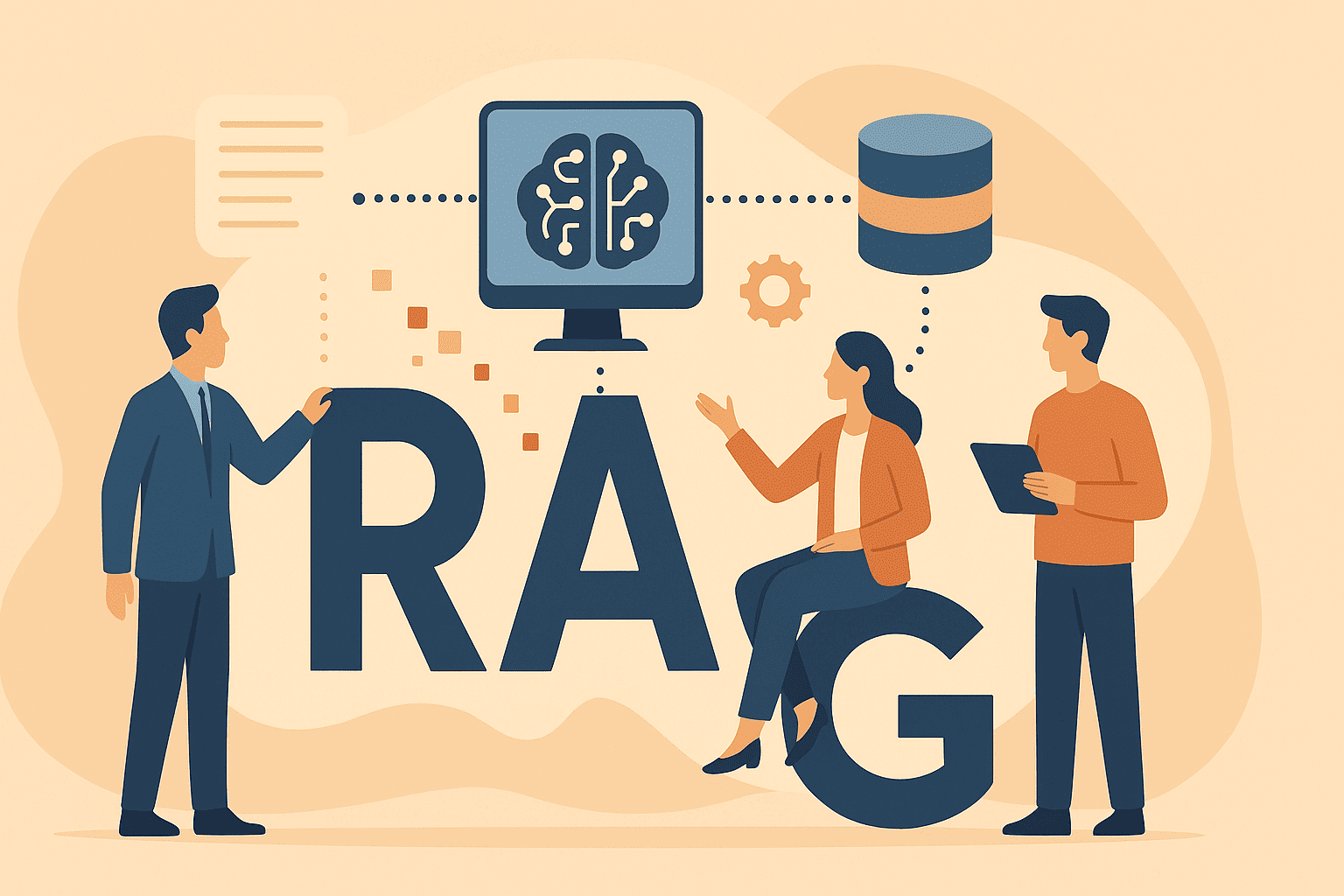Artificial Intelligence (AI) is no longer just a technological experiment, it’s a business-critical capability. Enterprises across industries are racing to embed AI into their operations, but one challenge remains: accuracy and trust. Traditional Large Language Models (LLMs) are powerful, but they can generate responses that are generic, outdated, or outright incorrect, commonly known as “hallucinations.”
What is RAG in AI?
Retrieval-Augmented Generation (RAG) is an AI architecture that enhances Large Language Models by connecting them to your organization’s real-time, trusted data sources. Instead of relying only on what the AI model was trained on (which may be outdated or generic), RAG retrieves relevant documents, knowledge bases, or datasets before generating a response. Think of RAG as combining the creativity of AI with the reliability of your company’s data.
Why RAG Matters for the C-Suite and Business Leaders
Every executive, from the CFO and COO to the Chief Risk Officer or Chief Marketing Officer, faces challenges where accuracy, speed, and trust in data are paramount. Here’s how RAG addresses those needs:
- Better Decision-Making with Trusted Intelligence
Executives often rely on fragmented data scattered across business units. RAG provides real-time, synthesized insights, pulling directly from internal reports, financial systems, compliance documents and market research.
- Reduced Risk of AI Hallucinations
For industries like finance, healthcare, and legal services, misinformation can lead to regulatory penalties or reputational damage. RAG ensures responses are anchored in verified data sources.
- Accelerated Knowledge Access
Employees and leaders spend countless hours searching for information. With RAG, answers are delivered instantly, whether it’s a compliance clause, customer contract, or performance dashboard.
- Competitive Advantage in the Market
Businesses that adopt RAG will provide more reliable AI-driven services to customers and stakeholders, outpacing competitors that rely on generic AI systems.
- Cost-Efficient AI Strategy
Unlike retraining LLMs (which is expensive and resource-intensive), RAG enables organizations to plug AI directly into their knowledge bases, lowering costs while increasing ROI.
Business Use Cases of RAG
- Customer Support: AI chatbots that don’t just “guess” answers but retrieve directly from updated knowledge bases, policies, and documentation.
- Knowledge Management: Employees can query internal data instantly instead of navigating complex systems or outdated intranets.
- Risk & Compliance: RAG ensures that compliance teams have immediate, AI-assisted access to the latest regulatory documents.
- Sales & Marketing Enablement: AI-driven responses based on product catalogs, competitive intelligence, and CRM data improve deal velocity and customer engagement.
- Executive Decision Support: RAG-powered AI can synthesize market intelligence, financial reports, and operational KPIs in real time.
How RAG Helps Enterprises Compete
- Accuracy at Scale: No more “best guess” AI responses, every answer is grounded in your company’s live data.
- Faster Time-to-Value: Avoid costly retraining cycles; plug RAG into existing AI workflows to see immediate improvements.
- Competitive Differentiation: Deliver customer and employee experiences that competitors who use generic AI simply cannot match.
Final Word for Business Leaders
RAG is not just another AI buzzword, it’s a paradigm shift in how enterprises can trust and operationalize AI. For CEOs, it means growth with lower risk. For CTOs, it means scalable, cost-efficient AI architectures. For CIOs, it means secure and compliant information governance.
By adopting Retrieval-Augmented Generation, leaders can bridge the gap between raw AI power and business-ready intelligence. The future of enterprise AI isn’t just generative. It’s retrieval-augmented.

